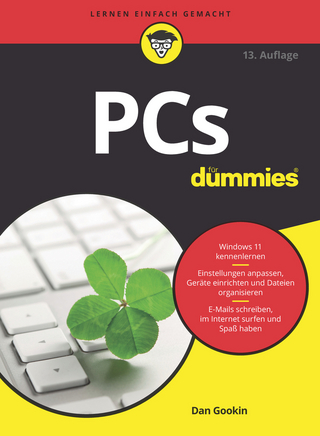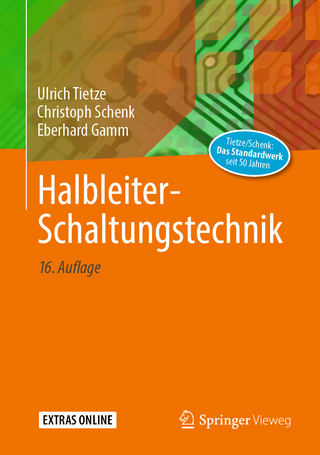
Wireless Power Technologies for Biomedical Devices
Springer International Publishing (Verlag)
978-3-031-52833-0 (ISBN)
- Noch nicht erschienen - erscheint am 04.01.2025
- Versandkostenfrei innerhalb Deutschlands
- Auch auf Rechnung
- Verfügbarkeit in der Filiale vor Ort prüfen
- Artikel merken
Discover ground-breaking advancements in wireless biomedical device technology with our comprehensive book, which delves into the latest innovations revolutionizing Healthcare
Chapter 1 introduces wireless power transfer (WPT) techniques, offering a solution to the frequent battery replacements required by cardiovascular implantable medical devices (cIMDs). Explore how WPT holds the promise of long-term functionality for these life-saving devices, ushering in an era of more efficient and convenient healthcare solutions.
In Chapter 2, explore the world of energy harvesting for cardiovascular implants. From Triboelectric Nanogenerators (TENG) to Biofuel cells, discover how self-powering devices are reshaping the landscape of cardiovascular healthcare, reducing the need for battery replacements, and enhancing patient convenience.
Chapter 3 unveils the potential of magnetoelectric composites in wireless power transfer for biomedical applications, while Chapter 4 sheds light on the competency of Triboelectric Nanogenerators in wireless device applications, offering a sustainable alternative to traditional batteries.
Chapter 5 showcases the promise of photovoltaic energy scavenging for implantable medical devices, highlighting its potential to revolutionize healthcare with higher-power conversion efficiencies and smaller form factors.
Explore the realm of ultrasound-based wireless powering technologies in Chapter 6, offering insights into the physics of acoustic powering and the design considerations for ultrasonically powered devices.
Chapter 7 ventures into the realm of smart contact lenses, discussing their transformative potential in healthcare, augmented reality, and personalized computing.
In Chapter 8, dive into the research gap for Single Input, Single-Output (SISO) state-of-the-art biomedical devices, exploring the challenges and opportunities in charge pump converters and multi-output converters.
Finally, Chapter 9 explores power management integrated circuits for implantable devices, focusing on energy efficiency and optimal power usage to prolong device life and minimize power loss.
With contributions from leading experts in the field, this book is an indispensable resource for researchers, engineers, and healthcare professionals alike, shaping the future of implantable medical devices and advancing patient care worldwide.
Dr Rupam Das is a Lecturer at the Electronic Engineering, University of Exeter, Streatham, UK. He is part of the Nano Engineering Science and Technology (NEST) and the Centre for Metamaterial Research and Innovation (CMRI). Prior joining this position, he was a Marie Curie Fellow (EU H2020 MSCA-IF: Wireless, Scalable and Implantable Optogenetics for Neurological Disorders Cure (WiseCure) at the Microelectronics Lab (meLAB), University of Glasgow. This Fellowship focused on developing the wireless optogenetic systems based on metamaterials to treat brain diseases. He also worked as a Research Associate in multi-million EU H2020 FET-Proactive "HERMES" project in Glasgow, where he was developing the flexible neural implant to treat epilepsy. Before moving to the UK, he was a BK'21 Postdoctoral Fellow at the University of Ulsan and Hanyang University at the Applied Bioelectronics Lab (ABLab). Rupam is an IEEE senior member and served as a guest editor in Royal Society of Philosophical Transaction A. He was also the local organizer of ICECS 2020 and session chair committee member for ICECS 2022. He is currently appointed as a committee member for Royal Society international Exchange and associate editor of IEEE Transactions of Biomedical Circuits and Systems.
Dr Hadi Heidari (PhD, SMIEEE, FHEA) is a Professor (Senior Lecturer) in the James Watt School of Engineering at the University of Glasgow, United Kingdom. His Microelectronics Lab (meLAB) conducts pioneering research on integrated microelectronics design and magnetoelectronics device technologies. In 2021, he founded Neuranics that is building next-generation magnetic sensors for neural interfaces. He holds a Royal Society of Edinburgh Saltire Fellowship. Dr Heidari has authored/co-authored over 200 peer-reviewed publications in top-tier journals or conference proceedings and acts as a reviewer for several journals and conferences. He has been the recipient of several awards, including the 2020 IET Healthcare Technologies Early Career JA Lodge Award, 2019 IEEE Sensors Council Young Professional Award. Dr Heidari is a Senior Member of IEEE and Fellow of Higher Education Academy (FHEA). He is a member of the IEEE Sensors Council Member-at-Large (2020-21 & 2022-23) and was IEEE Circuits and Systems Society Board of Governors (2018-20). He is Associate Editor-in-Cheif of IEEE Journal on Emerging and Selected Topics in Circuits and Systems (JETCAS) and serves on the editorial board of several journals, including IEEE Transactions on Biomedical Circuits and Systems, Microelectronics Journal, IEEE Journal of Electromagnetics, RF and Microwaves in Medicine and Biology, IEEE Access, IEEE Sensors Journal, and Frontiers in Neuroscience. He was the General Chair of 27th IEEE ICECS 2020 in Glasgow, Technical Program Chair of IEEE PRIME'19, and serves on the organizing committee of several conferences, including the UK Circuits and Systems Workshop (UKCAS), UK-China Emerging Technologies (UCET) Conference, IEEE SENSORS'16 and '17, NGCAS'17, BioCAS'18, PRIME'15, ISCAS'23, and the organizer of several special sessions on the IEEE Conferences.
Chapter.1.Wireless Power Transfer for Self-reporting Cardiovascular Implantable Medical Devices.- Chapter.2.Advancements in Energy Harvesting for Implantable Cardiovascular Devices.- Chapter.3.Magnetoelectric Composites for implantable wireless power transferin biomedical applications.- Chapter.4 Triboelectric Nanogenerators Competency to Wireless Device Applications.-Chapter 5 Photovaltoic energy Scavenging for the sustainable implantable Medical device.- Chapter 6 ultrasound- Based Wireless powering technologies.-Chapter.7.Smart Contact Lens.- Chapter.8.Motivation.- Chapter.9. Power Management Integrated Circuits for Implantable Devices.
| Erscheint lt. Verlag | 4.1.2025 |
|---|---|
| Reihe/Serie | Analog Circuits and Signal Processing |
| Zusatzinfo | IX, 236 p. 121 illus., 94 illus. in color. |
| Verlagsort | Cham |
| Sprache | englisch |
| Maße | 155 x 235 mm |
| Themenwelt | Informatik ► Weitere Themen ► Hardware |
| Technik ► Elektrotechnik / Energietechnik | |
| Schlagworte | Autonomous Wireless Implantable System • Implantable Energy Harvesting • Remote Powering for Implanted Biomedical Systems • Wireless Implantable Device • Wireless Power Transfer for Implanted Biomedical Systems |
| ISBN-10 | 3-031-52833-6 / 3031528336 |
| ISBN-13 | 978-3-031-52833-0 / 9783031528330 |
| Zustand | Neuware |
| Haben Sie eine Frage zum Produkt? |
aus dem Bereich


